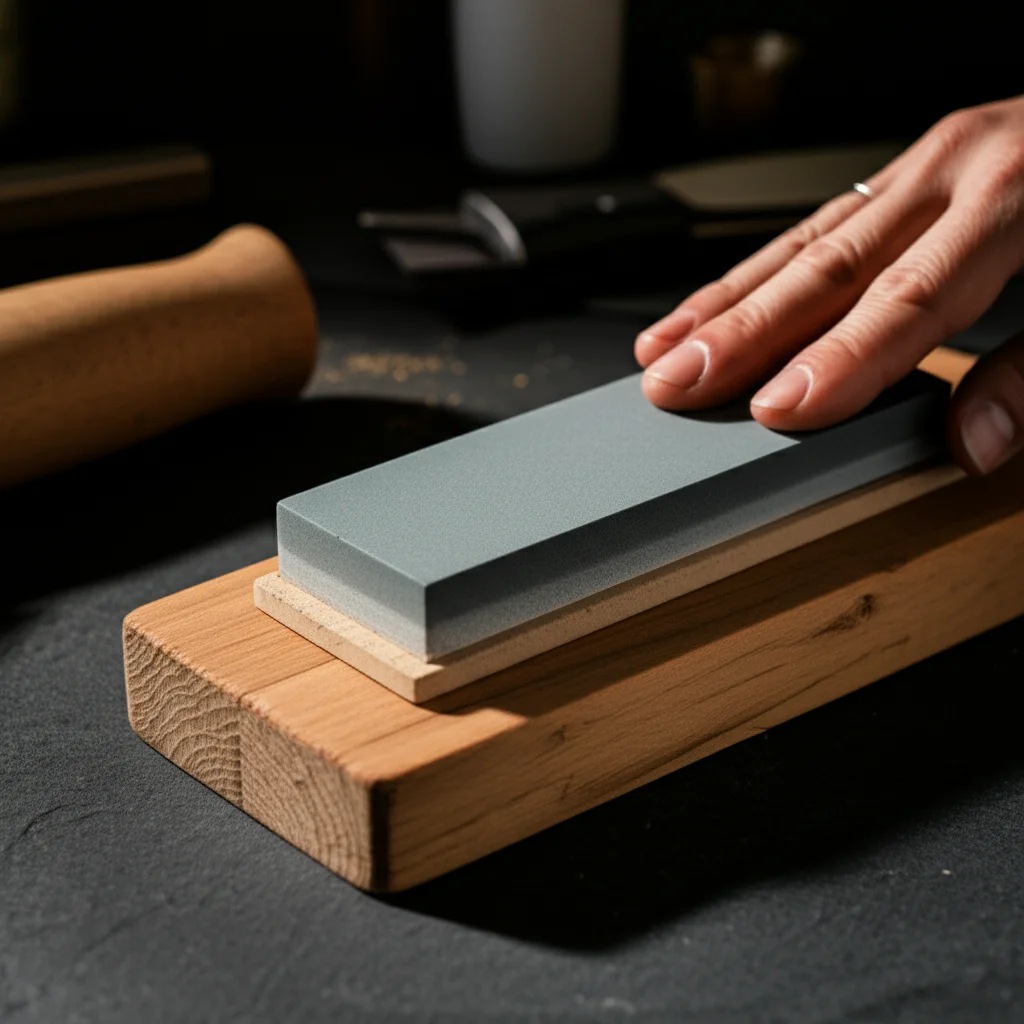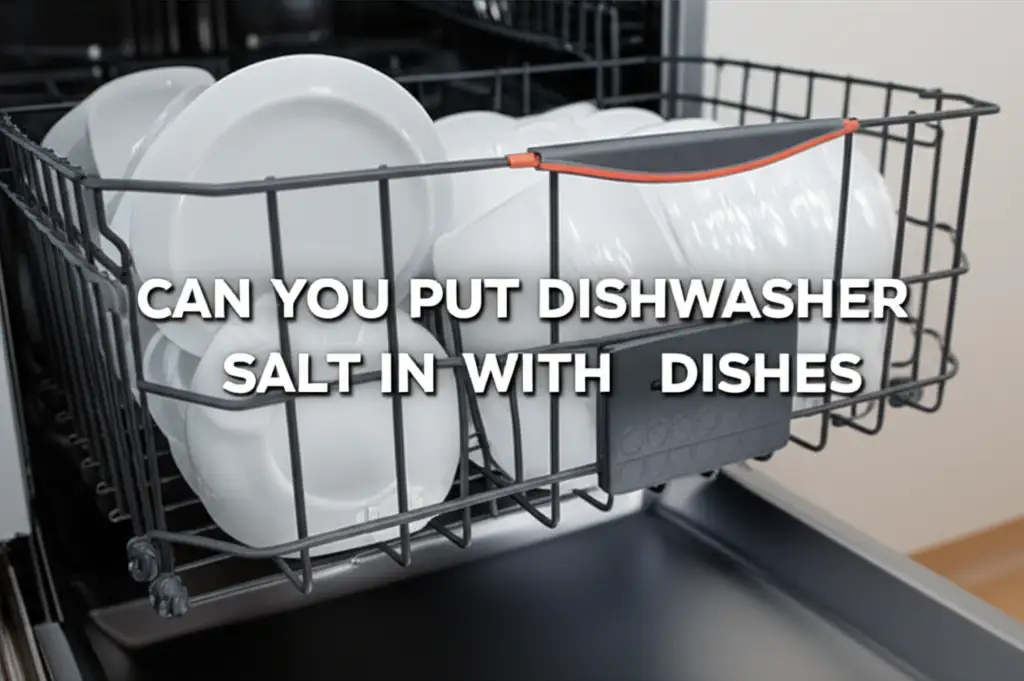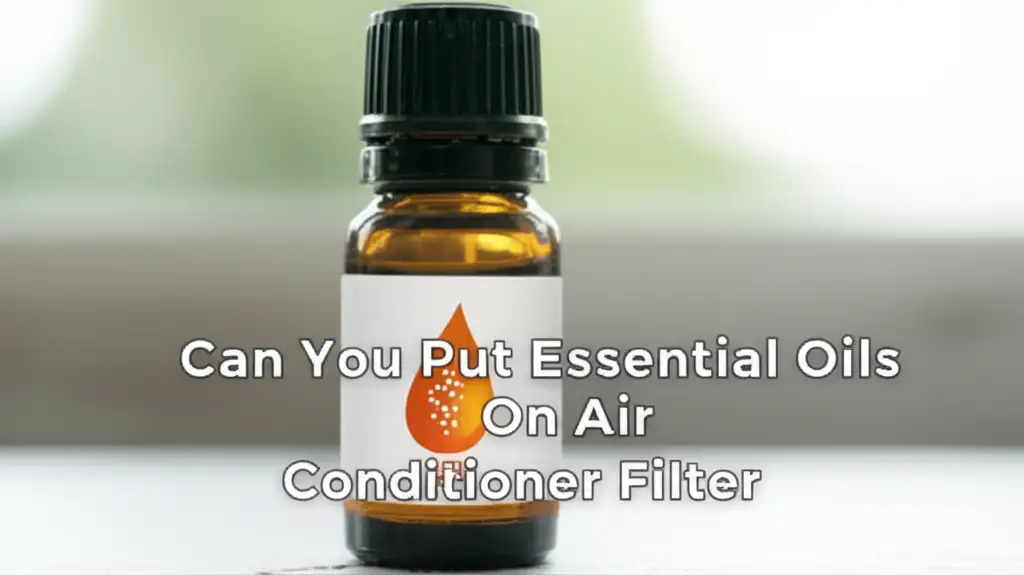· Todd Martin · Tool Care · 19 min read
How To Clean Whetstone

Unlock Peak Performance: How to Clean Your Whetstone Effectively
A dull knife makes kitchen tasks frustrating. It also poses a safety risk. You bought a whetstone to keep your blades sharp. But what happens when the whetstone itself gets dull or clogged? Learning how to clean whetstone is key to maintaining its effectiveness. A dirty whetstone cannot sharpen properly. Metal particles and stone slurry build up on its surface. This buildup fills the stone’s pores. It reduces the stone’s abrasive qualities.
Cleaning your whetstone restores its texture. It uncovers fresh abrasive particles. This article provides a comprehensive guide to cleaning your sharpening stones. We will cover the tools you need and step-by-step methods. You will learn about flattening, drying, and proper storage. We also discuss specific care for different stone types. By the end, you will know how to keep your whetstone in top condition. This ensures your knives always stay razor-sharp.
Takeaway
To clean a whetstone:
- Rinse the stone with water to remove loose debris.
- Use a stiff brush or a designated cleaning stone to scrub away embedded metal and slurry.
- For heavily clogged stones, consider a mild abrasive like dish soap or a specialized stone cleaner.
- Flatten the stone regularly to maintain an even sharpening surface.
- Dry the whetstone completely before storing it to prevent mold or damage.
Cleaning a whetstone involves removing accumulated metal particles and stone slurry from its surface. This process restores the stone’s abrasive qualities, ensuring it can effectively sharpen blades. You typically use water, a stiff brush, and sometimes an abrasive cleaner or a flattening stone to achieve a clean, functional surface.
Why Clean Your Whetstone? Understanding Clogging and Performance
Imagine sharpening your favorite kitchen knife. As you rub the blade against the stone, tiny metal particles come off the knife. These particles mix with water or oil on the stone’s surface. They form a thick, dark paste called slurry. This slurry is important for the initial sharpening process. It helps carry away worn abrasive grains. However, too much slurry or dried slurry becomes a problem.
Over time, this metal-filled slurry fills the microscopic pores of your whetstone. The stone’s surface feels less abrasive. It stops cutting into the blade effectively. This condition is often called “glazing” or “clogging.” A clogged whetstone cannot create a sharp edge. It might even polish the blade instead of sharpening it. Your sharpening efforts become wasted.
A clean whetstone exposes fresh abrasive grains. These grains are vital for proper sharpening. They bite into the metal of the blade. They remove material cleanly and efficiently. Cleaning restores the stone’s cutting ability. It ensures you get sharp results every time. It also extends the lifespan of your whetstone. Neglecting cleaning shortens its useful life. Keeping your whetstone clean is a simple step. It makes a big difference in your sharpening success.
Gathering Your Gear: Essential Tools for Whetstone Cleaning
Before you start cleaning your whetstone, gather the right tools. Having everything ready makes the process smoother. You will not need many items. Most of these tools are common household goods. Others are specific to whetstone care. Choose tools that will not damage your stone. Always prioritize safety during cleaning tasks.
First, you will need a source of running water. A sink with a faucet is perfect. Water helps rinse away loose particles and slurry. Next, get a stiff-bristled brush. A nylon utility brush works well. An old toothbrush can also work for smaller stones or fine grits. Avoid metal brushes, as they can scratch the stone surface. The brush helps dislodge embedded metal and dried slurry.
Consider a cleaning stone or a nagura stone. These small, abrasive blocks are designed for whetstone maintenance. They help break up glazed surfaces. They create a fresh slurry on finer stones. You might also want a mild abrasive. Dish soap is usually sufficient. For tougher buildup, a specialized stone cleaner exists. If your stone needs flattening, a lapping plate or flattening stone is essential. We will discuss flattening in detail later. Lastly, have some clean towels ready for drying. These tools ensure a thorough and effective clean for your whetstone. Just like you would clean a paint brush after use, cleaning your sharpening stone is about restoring its utility.
Tools Checklist:
- Running water: Sink or hose.
- Stiff-bristled brush: Nylon utility brush, old toothbrush.
- Cleaning stone/Nagura stone: Optional, but recommended for fine stones.
- Mild abrasive: Dish soap, or specialized stone cleaner.
- Lapping plate/Flattening stone: For restoring the stone’s flat surface.
- Clean towels: For drying the stone.
The Step-by-Step Method: How to Clean a Whetstone Effectively
Cleaning your whetstone brings it back to life. This process involves a few simple steps. Follow them for best results. Always work in a well-ventilated area. Protect your workspace from splashes. This general method works for most waterstones and oilstones.
Step 1: Rinse Off Loose Debris
Begin by rinsing your whetstone under cool, running water. Hold the stone under the faucet. Use your fingers to rub the surface gently. This step removes any loose metal particles and initial slurry. It prepares the stone for deeper cleaning. Do not use hot water, as it can damage some stone binders. Simply wash away the immediate dirt.
Step 2: Scrub the Surface with a Brush
Apply a small amount of dish soap to the wet whetstone. Take your stiff-bristled brush. Scrub the entire surface of the stone vigorously. Pay extra attention to any dark, clogged areas. You will see more slurry and metal particles coming off. Rinse the brush frequently to keep it clean. Continue scrubbing until the stone’s natural color starts to show through. This deep scrubbing action removes embedded grime. Think of it like scrubbing out stubborn residues from a skillet.
Step 3: Use a Cleaning Stone (Optional but Recommended)
For very stubborn clogs or glazed surfaces, a cleaning stone is highly effective. Wet both your whetstone and the cleaning stone. Rub the cleaning stone firmly over the surface of your whetstone. Use circular or back-and-forth motions. This creates new slurry on the whetstone. It helps dislodge deeply embedded metal. Rinse both stones frequently. Continue until the whetstone’s surface looks uniform and fresh. This action removes the packed-in metallic residue.
Step 4: Final Rinse and Inspection
After scrubbing and potentially using a cleaning stone, rinse your whetstone thoroughly under running water again. Ensure all soap, slurry, and debris are gone. Inspect the stone’s surface. It should feel gritty and look uniform. There should be no dark, shiny, or clogged patches. If you still see clogged areas, repeat the scrubbing or cleaning stone steps. A truly clean stone feels abrasive to the touch.
This step-by-step process helps restore your whetstone. It gets it ready for its next sharpening task. Regular cleaning prevents major buildup. It keeps your whetstone performing its best.
Achieving a Flat Surface: Flattening Your Whetstone for Precision
Cleaning a whetstone removes surface grime. But regular use also causes another problem: dishing. Dishing means the center of your whetstone wears down faster than the edges. This creates a concave, or bowl-shaped, surface. A dished whetstone cannot sharpen straight edges. It will create rounded bevels on your blades. This prevents a truly sharp edge. Flattening your whetstone restores its perfectly flat surface. This step is crucial for precision sharpening.
Why Flatten?
A flat stone ensures consistent contact with the blade. This leads to an even grind along the entire edge. It allows you to set precise angles. Without a flat surface, you might only sharpen parts of the blade. This results in an uneven or dull edge. Flattening also uncovers fresh abrasive material. It makes the stone more effective. Think of it like maintaining any tool where a level surface is key, similar to ensuring a clean and effective baking steel for even cooking.
Methods for Flattening
There are several effective ways to flatten a whetstone:
- Lapping Plate/Flattening Stone: This is the most common and recommended method. Lapping plates are specialized, very flat abrasive surfaces. They are often made of diamond-coated steel or silicon carbide.
- Process: Wet your whetstone and the lapping plate. Place the whetstone on the lapping plate. Apply moderate pressure. Move the whetstone over the plate in a figure-eight or random motion. Ensure even wear by rotating the whetstone often. Continue until the stone’s surface is uniformly flat. You will see slurry forming. Rinse both surfaces frequently during the process.
- Wet/Dry Sandpaper on a Flat Surface: This is a budget-friendly alternative. You need a truly flat surface. A thick piece of glass or a granite tile works well. Use silicon carbide sandpaper (wet/dry type). Start with a coarse grit (e.g., 220 grit). Progress to finer grits (e.g., 400 or 600 grit) for smoother results.
- Process: Tape the sandpaper securely to your flat surface. Add water to the sandpaper. Rub your whetstone over the wet sandpaper. Use a circular or random pattern. Apply even pressure. Check the stone frequently for flatness. Stop when the entire surface is uniform.
- Coarse Concrete Slab: For very coarse stones that are heavily dished, a rough concrete slab can work. This is a very aggressive method.
- Process: Wet the concrete slab and the whetstone. Rub the whetstone on the concrete in circles. Be careful, as this can remove material quickly. Check frequently. This method is best for coarser stones only.
After flattening, rinse your whetstone thoroughly to remove any grit. Your stone is now perfectly flat. It is ready for accurate sharpening. Flattening should be a regular part of your whetstone maintenance routine.
Drying and Storage: Proper Care After Whetstone Cleaning
Proper drying and storage are as important as cleaning. They prevent damage to your whetstone. They also extend its lifespan. Incorrect drying can lead to cracking or mold growth. Poor storage can cause chips or uneven wear. Take these final steps seriously.
Drying Your Whetstone
After cleaning and flattening, your whetstone will be saturated with water. It is crucial to dry it slowly and completely.
- Air Dry Thoroughly: Place the cleaned whetstone in a well-ventilated area. Allow it to air dry naturally. This can take anywhere from a few hours to several days. The drying time depends on the stone’s density and humidity levels. Do not place the stone in direct sunlight or near a heat source. Rapid drying can cause thermal shock. This leads to cracks, especially in waterstones.
- Avoid Trapped Moisture: Ensure the stone is not sitting in a puddle. You can place it on a wire rack or prop it up. This allows air to circulate around all sides. For oilstones, wipe away excess oil. Let them air dry. They do not absorb water, but residual oil needs to evaporate.
- Check for Dryness: The stone should feel completely dry to the touch before storage. It should also feel lighter than when wet. If it feels heavy, it still contains moisture.
Storing Your Whetstone
Once dry, store your whetstone properly. This protects it from damage and contaminants.
- Protective Case: Many whetstones come with a plastic case or wooden box. Use this case for storage. It protects the stone from dust, dirt, and accidental drops.
- Flat Surface: Store the whetstone flat. Do not store it on its side, as this can cause it to warp over time. Keep it away from objects that might scratch or chip its surface.
- Stable Environment: Store your whetstone in a stable environment. Avoid areas with extreme temperature fluctuations. High humidity can encourage mold growth, especially if the stone is not fully dry. Cold temperatures can cause residual moisture to freeze and expand, potentially cracking the stone. A cabinet or tool drawer is usually ideal.
By following these drying and storage guidelines, your whetstone will remain in optimal condition. It will be ready for your next sharpening session. Think of it like taking care of sensitive equipment, similar to properly cleaning and maintaining a water filter to ensure it performs its best.
Oil vs. Water Stones: Specific Cleaning Approaches
Whetstones broadly fall into two main categories: waterstones and oilstones. While the general cleaning principles apply, their unique properties require slightly different approaches. Understanding these differences ensures you clean each type correctly. This prevents damage and maintains performance.
Cleaning Waterstones
Waterstones are designed to be used with water. They are porous and absorb water, forming a slurry during sharpening. This slurry helps remove metal quickly.
- Pre-Soaking: Many waterstones require pre-soaking before use. This means they are already saturated with water. This makes them easier to clean.
- Rinsing: Rinse waterstones immediately after each use. Use cool, running water. This washes away most of the loose slurry and metal particles.
- Scrubbing: For deeper cleaning, use a stiff nylon brush and dish soap. Scrub the surface vigorously. The soap helps break down the metal-filled slurry. It lifts it from the stone’s pores.
- Nagura Stone: A nagura stone is especially useful for waterstones. It is a small, soft abrasive stone. Rubbing it on the waterstone creates a fresh slurry. This also helps unclog the surface. It exposes new abrasive particles. This is important for maintaining cutting speed.
- Drying: Waterstones absorb a lot of water. They need a long, slow drying process. Do not rush it with heat. Rapid drying can cause cracking. Allow them to air dry completely, potentially for several days.
Cleaning Oilstones
Oilstones are denser than waterstones. They are used with oil as a lubricant and medium for carrying away metal particles.
- Wiping: After use, wipe the oilstone’s surface with a clean cloth or paper towel. This removes most of the spent oil and metal particles.
- Mineral Spirits or Solvent: If the oilstone is heavily clogged, you might need a stronger cleaning agent. Mineral spirits or a similar solvent can dissolve the hardened oil and metal. Apply a small amount to the stone. Let it sit for a few minutes. Then scrub with a stiff brush.
- Dish Soap and Hot Water (with caution): For oilstones that are not heavily saturated, a degreasing dish soap and hot water can help. Be careful with very hot water, as sudden temperature changes can stress some stones. Scrub thoroughly.
- Surface Scraping: For extremely stubborn, hardened oil and metal buildup, you might gently scrape the surface. Use a flat piece of metal or an old chisel. Be very careful not to damage the stone. This is a last resort.
- No Pre-Soaking: Oilstones do not require pre-soaking. Do not soak them in water.
- Drying: After cleaning with water or solvent, let oilstones air dry. They are less prone to cracking from drying than waterstones.
Understanding these differences helps you apply the correct cleaning method. This ensures each type of whetstone remains effective and lasts longer.
Troubleshooting Your Whetstone: Dealing with Stubborn Issues
Sometimes, a standard cleaning is not enough. Your whetstone might have stubborn issues. These problems can prevent proper sharpening. Knowing how to troubleshoot them helps restore your stone. Do not give up on a seemingly ruined whetstone.
Issue 1: Glazed or “Shiny” Surface
A glazed surface looks shiny and smooth. It feels less abrasive. This happens when metal particles pack tightly into the stone’s pores. The stone can no longer cut effectively.
- Solution: Use a cleaning stone or a nagura stone vigorously. Rub it firmly over the glazed area. This will abrade the packed metal away. For very stubborn glazing, combine this with a mild abrasive cleaner. Silicon carbide powder with water on a flat surface can also help. It acts like a powerful abrasive cleaner.
Issue 2: Deeply Embedded Metal or Discoloration
Dark streaks or patches might appear on your whetstone. These indicate heavy metal impregnation. Standard scrubbing might not remove them.
- Solution: Consider a more aggressive cleaning method. For waterstones, a strong solution of dish soap and hot water (if the stone can handle it without cracking) followed by extensive scrubbing. For oilstones, mineral spirits or paint thinner can dissolve hardened oil and metal. Allow the solvent to soak briefly before scrubbing. If discoloration persists, it might be permanent. However, as long as the surface feels abrasive, it can still sharpen. Focus on restoring the grit, not just the color.
Issue 3: Persistent Dishing or Uneven Wear
Despite flattening, your stone might quickly become dished again. Or, you might find it hard to get a uniform flat surface.
- Solution: Check your sharpening technique. Are you applying even pressure across the stone? Are you using the entire surface of the stone? Uneven pressure leads to uneven wear. Also, ensure your lapping plate or flattening surface is truly flat. A warped flattening surface will transfer that warp to your whetstone. Invest in a high-quality diamond lapping plate for consistent flatness. Regular, brief flattening sessions are better than infrequent, long ones.
Issue 4: Mold or Mildew Growth
If your waterstone is stored wet, mold or mildew can grow on its surface. This is unsightly and can harbor bacteria.
- Solution: Clean the stone thoroughly with dish soap and a brush. For persistent mold, a diluted bleach solution (1 part bleach to 10 parts water) can be used. Soak the stone briefly (5-10 minutes) in the solution. Rinse it very thoroughly afterward. Then, ensure the stone dries completely before storing it. Proper drying is key to preventing mold recurrence, similar to how you would clean mold off shoes or other porous items.
By addressing these common issues, you can extend the life and effectiveness of your whetstone. Do not discard a stone just because it looks dirty. Most issues are fixable with proper cleaning and maintenance.
Extending Whetstone Lifespan: Best Practices for Ongoing Care
Cleaning your whetstone is not a one-time event. It is a vital part of ongoing maintenance. Adopting best practices ensures your whetstone lasts for many years. It also ensures it consistently delivers sharp edges. These practices go beyond just cleaning. They involve thoughtful use and regular inspection.
Use Proper Sharpening Technique
The way you use your whetstone impacts its wear.
- Even Pressure: Apply consistent, even pressure across the blade. This prevents uneven wear on the stone. Avoid pressing too hard in one spot.
- Utilize Entire Surface: Do not always sharpen in the same small area. Distribute your sharpening strokes across the entire stone surface. This helps wear the stone down more evenly. It delays dishing.
- Correct Lubricant: Always use the correct lubricant for your stone type. Water for waterstones, oil for oilstones. Using the wrong one can cause clogging or damage. It affects the stone’s performance.
Regular Inspection
Make it a habit to inspect your whetstone before and after each use.
- Check for Clogging: Look for shiny, dark patches or areas that feel smooth. These are signs of clogging.
- Check for Dishing: Place a straight edge (like a ruler) across the stone’s surface. Check for gaps under the ruler. This indicates dishing.
- Check for Chips/Cracks: Look for any chips or cracks. These can affect sharpening performance and stone integrity. Address them before they worsen.
Timely Cleaning and Flattening
Do not wait until your whetstone is severely clogged or dished.
- Clean After Each Use: A quick rinse and light scrub after each sharpening session prevent major buildup.
- Flatten Regularly: Flatten your stone as soon as you notice dishing. For frequent sharpeners, this might mean every few uses. For occasional users, it might be once a month or every few months. Keeping the stone flat makes sharpening easier and more effective. It reduces the amount of material you need to remove.
Respect the Grit
Do not use a coarse stone for fine finishing. Do not use a fine stone for heavy material removal. Each grit has a purpose. Using a fine stone to fix a chipped blade will wear it down quickly. Use coarser grits for initial shaping. Use finer grits for refining the edge. This protects the integrity of your stones.
By following these best practices, you treat your whetstone with care. This will ensure it remains a reliable tool for keeping your blades razor-sharp. Just like you’d maintain a stainless steel appliance to prolong its shine, proper whetstone care ensures its effectiveness and longevity.
Frequently Asked Questions
Q1: How often should I clean my whetstone?
A: You should rinse your whetstone after every use to remove loose slurry and metal. A deeper cleaning, involving scrubbing with a brush and soap, is recommended every few sharpening sessions or when you notice the stone becoming clogged or less effective. Flattening should occur whenever you see signs of dishing.
Q2: Can I use household cleaners like bleach or vinegar on my whetstone?
A: For most whetstones, dish soap and water are sufficient. Diluted bleach can be used sparingly for mold, but rinse very thoroughly. Avoid strong acidic cleaners like vinegar, as they can potentially damage the stone’s binder or cause etching over time, especially with prolonged contact.
Q3: My whetstone smells like old, rancid oil. How do I get rid of the smell?
A: This usually happens with oilstones where old oil has turned rancid. Clean the stone thoroughly with mineral spirits or a strong degreasing dish soap. Let it soak briefly, then scrub vigorously. Rinse well and allow it to air dry completely in a well-ventilated area to dissipate any lingering odors.
Q4: My whetstone has deep grooves. Can I fix them by cleaning?
A: Cleaning will not remove deep grooves. Grooves indicate significant wear or damage. To fix deep grooves, you must flatten the whetstone using a lapping plate or coarse wet/dry sandpaper on a very flat surface. This process removes material from the high spots until the stone is uniformly flat.
Q5: Can I put my whetstone in the dishwasher?
A: No, you should never put a whetstone in a dishwasher. The high heat, harsh detergents, and rapid temperature changes in a dishwasher can severely damage or crack your whetstone, especially waterstones, which are more sensitive to thermal shock. Manual cleaning is always the safest option.
Q6: Why does my whetstone feel smooth instead of gritty after cleaning?
A: If your whetstone feels smooth after cleaning, it means the surface is still glazed or the pores are still clogged with fine metal particles. A simple rinse and scrub might not be enough. You need to use a cleaning stone (nagura) or flatten the stone using a lapping plate to expose fresh abrasive grains and restore its gritty texture.
Conclusion
Keeping your whetstone clean is fundamental for maintaining sharp knives. We have explored the importance of regular cleaning, recognizing clogged surfaces, and the specific care for different stone types. You now understand the tools needed, from a simple brush to a specialized lapping plate. The step-by-step method ensures you can effectively clean and flatten your whetstone. This restores its full sharpening potential.
Remember, a clean, flat whetstone works more efficiently. It makes sharpening easier and yields better results. Regular maintenance prevents future problems. It also extends the life of your valuable sharpening tool. By following these guidelines, you ensure your whetstone is always ready. It will help you achieve razor-sharp edges on all your blades. Start cleaning your whetstone today. Experience the difference a well-maintained stone makes. Your knives, and your cooking, will thank you.
- whetstone cleaning
- sharpening stone maintenance
- how to restore whetstone
- remove metal particles from whetstone
- flattening whetstone
- whetstone care tips
- abrasive cleaning stone





